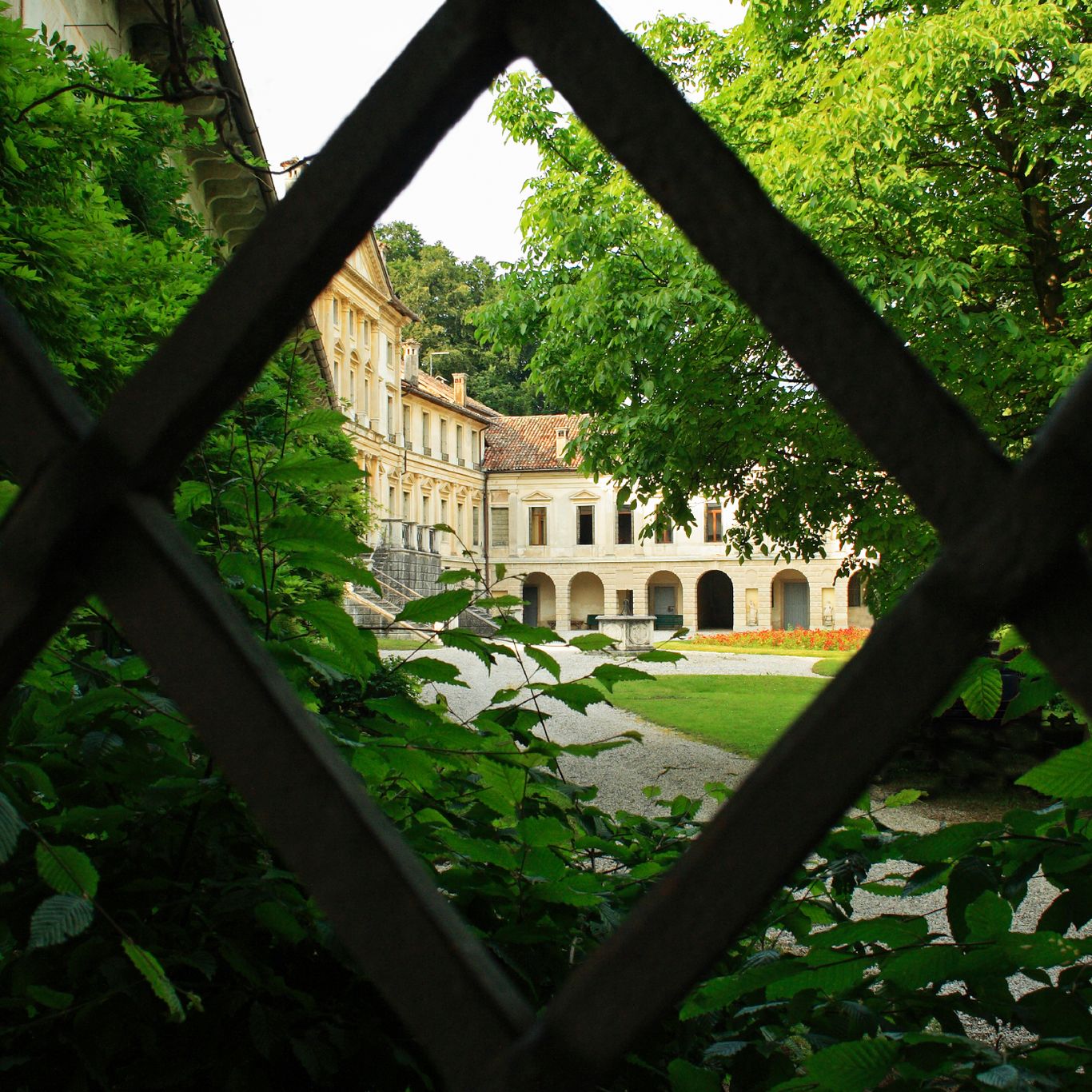Springwater Colony
A content larp for 30 players Nov-Dec 2025
Setting
This game is centered around the Springwater Colony: a residential facility for the lifelong treatment and isolation of those afflicted with Loimos, an incurable infectious disease.
The vaccine developed some 30 years ago, however, means that facilities like Springwater are closing down: incoming patients are a rarity and, with the disease considered by most to be a thing of the past (and visitors still banned by paranoid medical boards), a resident might go years without seeing a new face.
Our larp takes place over an exceptional weekend during which Springwater will welcome some new patients as well as a pair of government inspectors. The latter are coming to inspect the facility and decide its fate, spurred on by a recent incident, details of which are known to only a few yet whispered speculation abounds. With this pretext, the national newspaper has also received special dispensation to send a photographer and their top investigative reporters for a special exposé on life – and death – inside the residence.
This larp takes place in the 1980s: advancements like smartphones, real-time global epidemiological studies, and predictive algorithms at the click of a button exist purely in science fiction if at all. The location and background culture are generic European; social hierarchy among the residents is fairly flat, with an individual’s behavior having the greatest effect on their place in the isolated community. As in any community, the residents tend to group off by personality, hobbies, and commonly-held beliefs.
There is no particular religion observed by the residents or the Reverend (more a general spiritual and psychological advisor than a dogmatic clergyperson of any particular stripe), however spirituality and the meaning of life are frequent topics. Over their lives, the patients may have been subjected to inhumane treatment at the hands of medical authorities and certainly have been isolated from broader society as a result of a disease they know will kill them and all of their neighbors. All of them have asked, some of them many times, “Why?” A sense of injustice still burns among some, but for most it is a fight they have long since abandoned.
The following documents are part of an information packet provided by Dr. Hollis Everett, head of the Springwater Residential Facility to the visitors a week ago to prepare them, although the contents are common knowledge to all characters.
Loimos
Excerpt from Schmidt et al. (1962). Loimos for the vaccination generation. The Lancet, 300(7775), 493-504; an older article, but still considered the most recent review of the disease suitable for the layman:
Epidemiology and transmission: Loimos is caused by a common virus, Treponema loimos, which infects nerve cells via B-plasmid insertion (thereby replicating with every new cell). T. loimos has been identified in myriad albeit isolated natural sources as diverse as pond mud in Kazakhstan, maned wolf scat in Bolivia, and eagle-owl livers in southern Sweden. It does not seem to affect animals and human infection from natural sources is incredibly rare.
The ensuing disease is often contracted albeit only rarely symptomatic before the teen years. Transmission occurs most commonly through extensive contact with the mucus (e.g., sputum, saliva, nasal, genital) produced by an infected person. Frequent local (yet epidemic) outbreaks in the ‘40s for example were determined to have been caused by insufficient drinking water filtration for public reservoirs in which infected persons had bathed.
Not all exposed contract the disease, although this phenomenon is yet unexplained. Of the general population, it is thought that 45-65% are naturally immune.
Symptoms and prognosis: Initially presenting as an itchy, pale pink rash across the torso post-puberty, the disease soon bears few physical indications. Muscle weakness and soreness, nerve tingling or pain, loss of sensation or fine motor control in the extremities or the face are all common and may come and go throughout an individual’s lifetime, whereas the lethargy and mild, placid confusion tends to remain fairly constant. This eventually becomes early-onset dementia (first symptoms around 40 years of age, occasionally as early as the third decade) and a rapid decline, death occurring usually 2-3 years later. Secondary infections (especially respiratory) are quite common and usually the cause of death. Lifespan rarely exceeds 60. Due to the mental "fog", patients struggle to consistently hold down gainful employment or keep house.
Treatment and prevention: There is no known cure for Loimos. Treatment is purely palliative and includes basic nursing care as individuals cannot live alone; isolation colonies have for many decades been the norm throughout the western world to minimize outbreaks.
The vaccine, developed collaboratively by labs in Geneva and Stockholm, was first tested on human subjects in 1949 and released the following year in aggressive vaccination campaigns backed by the WHO and national governments worldwide. All public schoolchildren and most adults in North America, Europe, and Australia were vaccinated within the first decade and the campaign continues to this day in Africa, Asia, and South America. In the early years of the vaccine, boosters were often administered but these were later deemed unnecessary. Vaccine efficacy continues to be monitored but it has been sufficiently high to deem further research for a cure unnecessary.
As there are still living individuals with the disease (mostly in isolation colonies), it cannot yet be considered eradicated in any region, although there were only 16 new cases in the USA in the past year.

Isolation Order
Memo “Solution for the Loimos Epidemic” to the Minister for Health dated 12 August, 1913:
Per the recommendations of the chiefs of medicine from every tier 1 state hospital, we hereby advise the forced isolation of all persons known or suspected to be infected with Loimos in permanent residential colonies. The virulence of the disease (and mental incapacity of its victims) is such that we must take no chances that outbreaks be permitted to continue.
A list of suggested residences follows to house the estimated 150,000 affected currently in the country. Each is to be outfitted as a medical facility including staff and treatment rooms (budget has been pooled together from disaster, training, and facility budgets) and patients will be partially tasked with maintenance to attain some degree of self-sufficiency.
To ensure that the colonies do not grow, sterilization of all patients is an absolute requirement. Recommendation for a detention (and solitary isolation) order for those who resist, to prevent the need for institutions to be fully limited by gender.
Handwritten note from Dr. Hollis Everett: “The sterilization order was countermanded around the time of the first wave of vaccinations, approximately 30 years ago.”
Springwater Colony
An article in The National Tribune from 30 January, 1954, entitled “The Storied History and Silent Present of Springwater Estate”:
Once a refined country estate left to crumble with the reputation of its lordly family, Springwater Estate just outside Newton has been revitalized with sweeping gardens, dozens of stately bedroom suites, and even its own parsonage, but now serves a very different kind of resident.
The estate was first designed as a summer residence of Earl Thomas VII, who completed the villa and stables in 1783. Subsequent buildings and the gardens (said to be a gift to his mistress, Marie of Lancaster) were completed soon thereafter, with masons allegedly having been pushed so hard to complete their task that they slept on the rafters of the stable to save time climbing up and down! After Marie’s death in 1791, the Earl never returned to Springwater, leaving it to his third son in his will. A son with a love of gambling -- and bad luck. The gardens were neglected, the stable caught fire in 1799, and eventually the estate went to the taxman.
Springwater sat empty for some years after that, earning a reputation among the locals as a hideout for local thieves and layabouts. Only in 1913 did its transformation begin – into a modern sanatorium! The fresh, invigorating breeze, soothing landscape, and refinement of the building are obvious at first glance, making it the ideal location for victims of Loimos, that unfortunate disease. Managed by Dr. James Murphy, patients are provided with fine meals, cared for ‘round-the-clock by trained nurses, and live out their lives without a care in the world. Although it wasn’t possible to interview any of them for your author’s own safety, the view from the gate was clear that patients must think themselves in paradise already!
© Copyright. All rights reserved.
Wir benötigen Ihre Zustimmung zum Laden der Übersetzungen
Wir nutzen einen Drittanbieter-Service, um den Inhalt der Website zu übersetzen, der möglicherweise Daten über Ihre Aktivitäten sammelt. Bitte überprüfen Sie die Details in der Datenschutzerklärung und akzeptieren Sie den Dienst, um die Übersetzungen zu sehen.
